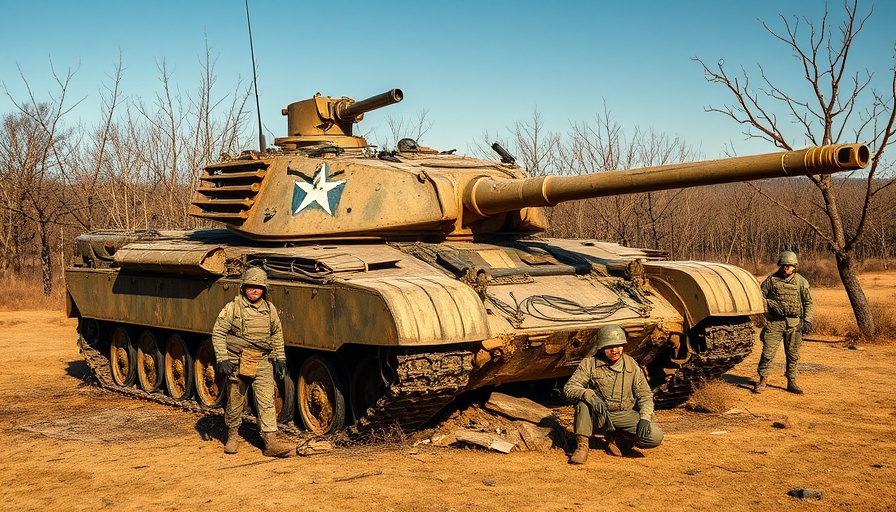
Understanding the Consequences of Equipment Loss in Kursk
The recent events surrounding the Ukrainian retreat from Kursk have resulted in significant losses of military equipment, showcasing the dire challenges faced by Ukrainian forces. Analysts note that around 500 vehicles and artillery were left behind during this strategic withdrawal, intensifying concerns about the sustainability of Ukraine’s resistance against Russian advancements.
The Indelible Impact of Abandoned Military Assets
The equipment abandoned in Kursk included some of Ukraine's most advanced and vital weaponry. Among the hardest hits was the 47th Mechanized Brigade, renowned for its elite capabilities. The brigade had to leave behind numerous M-1 Abrams tanks and M-2 Bradley vehicles. With reports indicating that at least 10 Abrams tanks and upwards of 80 Bradley vehicles were lost, the implications for field operations are profound. This not only weakens the immediate tactical position but also potentially strengthens Russian military capabilities, as these sophisticated systems are now in their hands.
Comparative Analysis of Losses
While the Ukrainian forces endured significant losses, the Russian army reportedly lost around 600 of their own vehicles in the conflict. However, experts highlight that Russia's ability to replenish its equipment far exceeds that of Ukraine, leading to a troubling imbalance in operational capacity over time.
Future Implications and Support Decisions
The departure from Kursk marks a turning point not just in the operational theater, but also for international support dynamics. As the Ukrainian military seeks to recover from these losses, the continuous flow of Western military support, particularly from the U.S. and allied nations, will be crucial. The recent change in U.S. administration and fluctuating political sentiments can lead to an uncertain future for military aid. It remains essential for Ukraine to articulate its needs effectively in order to secure the necessary resources for future confrontations.
Lessons Learned: Combat and Strategy
The situation at Kursk serves as a vital lesson in military logistics and strategy. Going forward, Ukrainian forces must find ways to mitigate equipment losses during retreats, possibly by executing more controlled, strategic withdrawals to avoid abandoning crucial technologies and weaponry. This could include better planning around supply lines and securing equipment recovery operations before full retreats.
Final Thoughts on Technician Warfare
The events in Kursk elucidate not only the physical toll of war but also the psychological burden on soldiers and strategists who must reckon with the losses of complex machinery and the resultant gap in firepower. The efficacy of current strategies will hinge on Ukraine's ability to adapt and innovate behind enemy lines, utilizing technology to regain the initiative amidst challenging circumstances.
 Add Row
Add Row  Add
Add 




Write A Comment